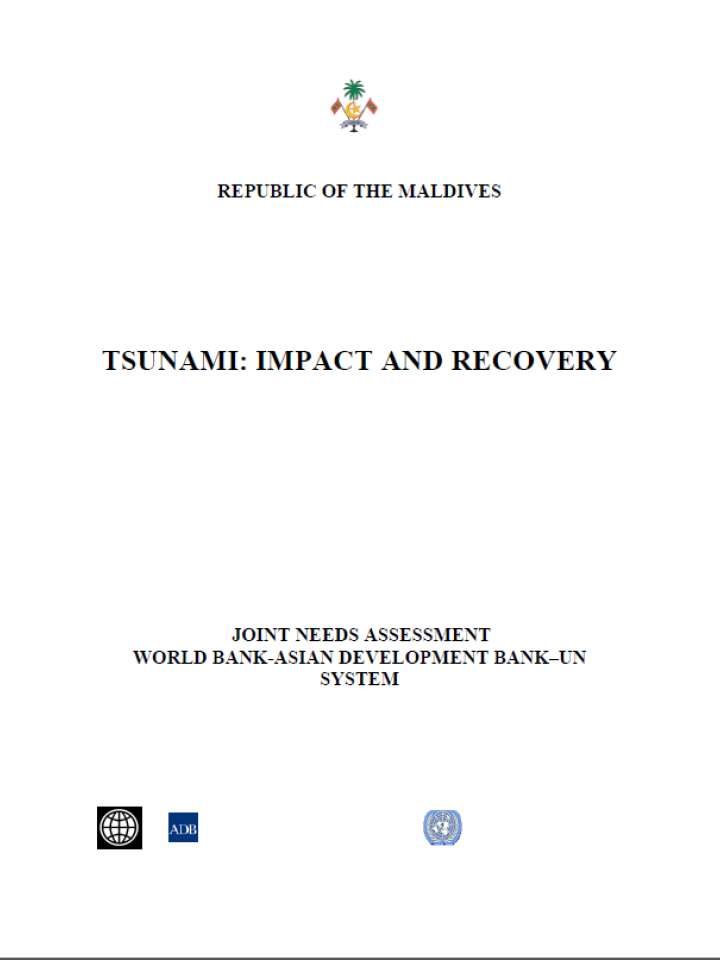Tsunami: Impact and Recovery Maldives Joint Needs Assessment
The tsunami which hit Maldives on 26 December, 2004 was a nation-wide disaster which caused severe damage to the physical infrastructure of many islands. The tsunami has set back the high levels of social progress and prosperity achieved in recent years. Total damages are estimated to be US$470 million, 62% of Gross Domestic Product (GDP). Of these losses, direct losses are $298 million, or about 8% of the replacement cost of the national capital stock. Severe damage
was caused to houses, tourist resorts, boats and other fishing equipment, schools, health facilities, transport and communication equipment, water and sanitation, and electricity infrastructure. There has also been substantial damage to agricultural crops and perennial trees. Farms, homestead plots, and aquifers have been salinized. The physical damage has led to severe human suffering inasmuch as large segments of the population have lost their dwellings, lifetime assets,
savings, and sources of livelihood. About 7% of the population is now living in temporary shelters or with relatives.
The total damage estimate of US$470 million does not, however, include a very real and critical cost that would demand additional financing, namely the cost of environmental damage and substantial soil erosion on many affected islands that to a great extent rely for their livelihoods on agriculture and home based market gardening; these costs could not yet be quantified as detailed surveys are still under way.
